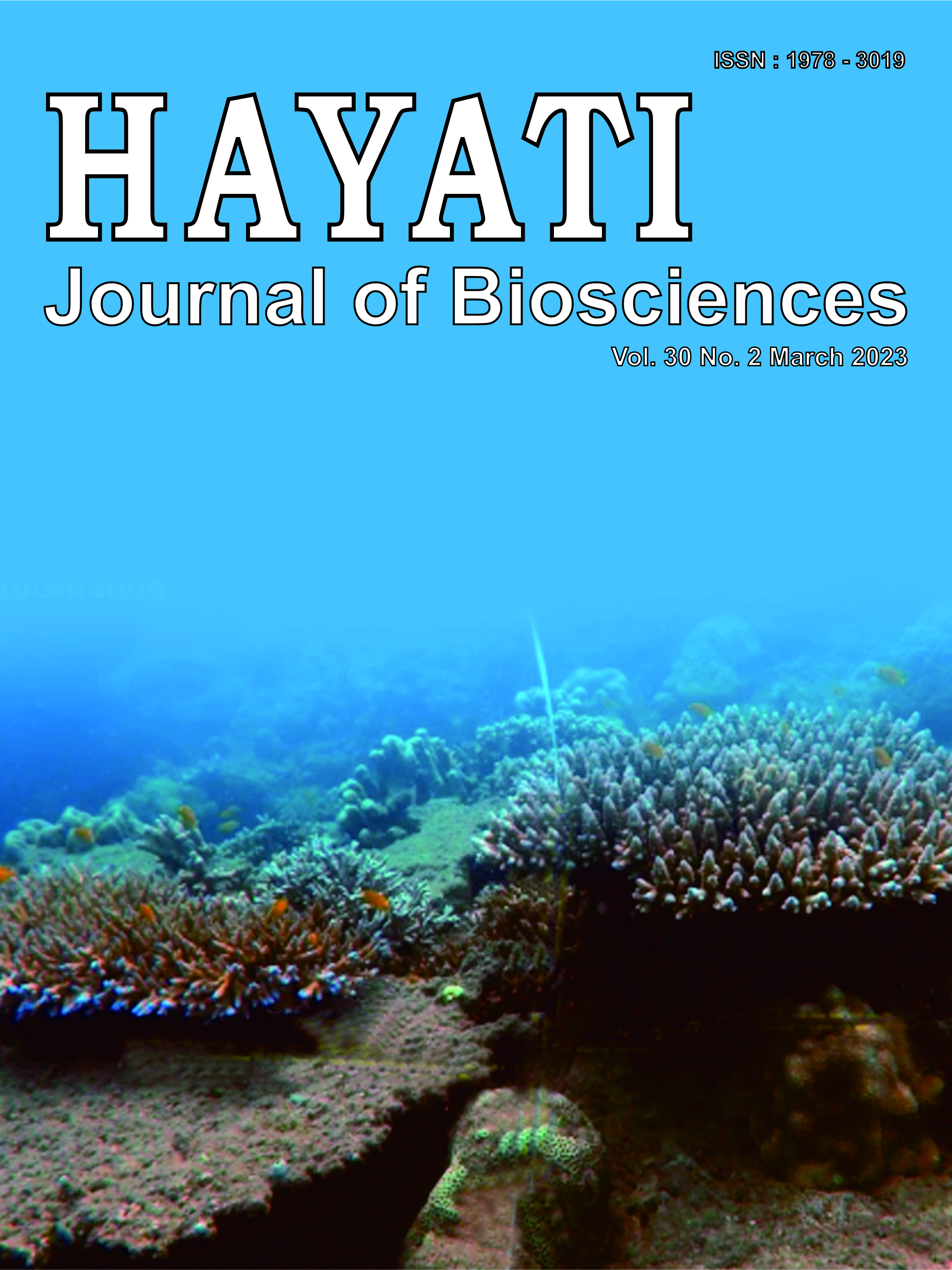Metabolites Profiling of Penicillium citrinum Recovered from Endophytic of Ramie (Boehmeria nivea) as a Potential Biocontrol Against Pathogenic Fungi
Abstract
Endophytes are a potent source of bioactive compounds that mimic plant-based metabolites. Fungi Fusarium spp. and Clonostachys rosea have been identified as pathogenic microorganisms in ramie (Boehmeria nivea). The antifungal test was carried out using the diffusion method and the MIC50 and Minimum Fungicidal Concentration (MFC) values using the tested microbial pathogens were Fusarium solani isolate 3248941, F. solani isolate Colpat-359, F. oxysporum isolate N-61-2, dan Clonostachys rosea strain B3042. Identification of secondary metabolites of the extract was carried out using GC-MS. The chromatogram of GC-MS analysis of this ethyl acetate extract (EA) showed seven dominant chemical compounds with various biological activities. Ethyl asetate extract of P. citrinum showed inhibition zone ranged from 19.10–22.07 mm with strong-very strong category at 200 mg ml-1 concentration against the tested microbial pathogens. Results revealed that the significant MIC values were observed against F. solani isolate 3248941 and Clonostachys rosea strain B3042 by less than 6.3 mg ml-1 and against F. solani isolate Colpat-359 and F. oxysporum isolate N-61-2 with 12.5 mg ml-1 and 25 mg ml-1 respectively. Minimum Fungicidal concentrations (MFC) for EA of P. citrinum were also reported against F. solani isolate 3248941 and C. rosea strain B3042, by 12.5 mg ml-1, whilst Fusarium solani isolate Colpat-359 by 25 mg ml-1 and Fusarium oxysporum isolate N-61-2 ,by 50 mg ml-1 respectively. Results of this study showed that P. citrinum, endophytic fungi of ramie, could be a promising source of compounds for antifungal agents.
Downloads
Copyright (c) 2023 Kartika Sari, Vira Kusuma Dewi, Asri Peni Wulandari, Nia Rossiana, Tati Herlina, Fitri Widiantini

This work is licensed under a Creative Commons Attribution-NonCommercial 4.0 International License.
HAYATI J Biosci is an open access journal and the article's license is CC-BY-NC. This license lets others distribute, remix, tweak, and build upon author's work, as long as they credit the original creation. Authors retain copyright and grant the journal/publisher non exclusive publishing rights with the work simultaneously licensed under a https://creativecommons.org/

























.png) IPB University
IPB University Department of Biology
Department of Biology The Indonesian Biological Society
The Indonesian Biological Society 

